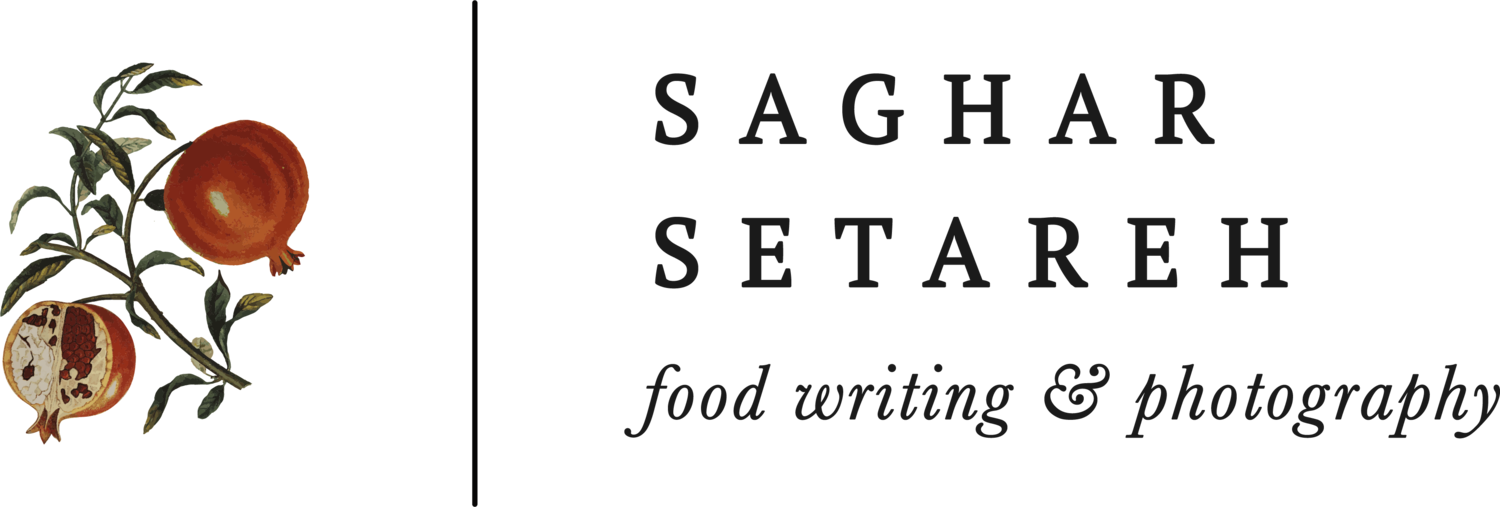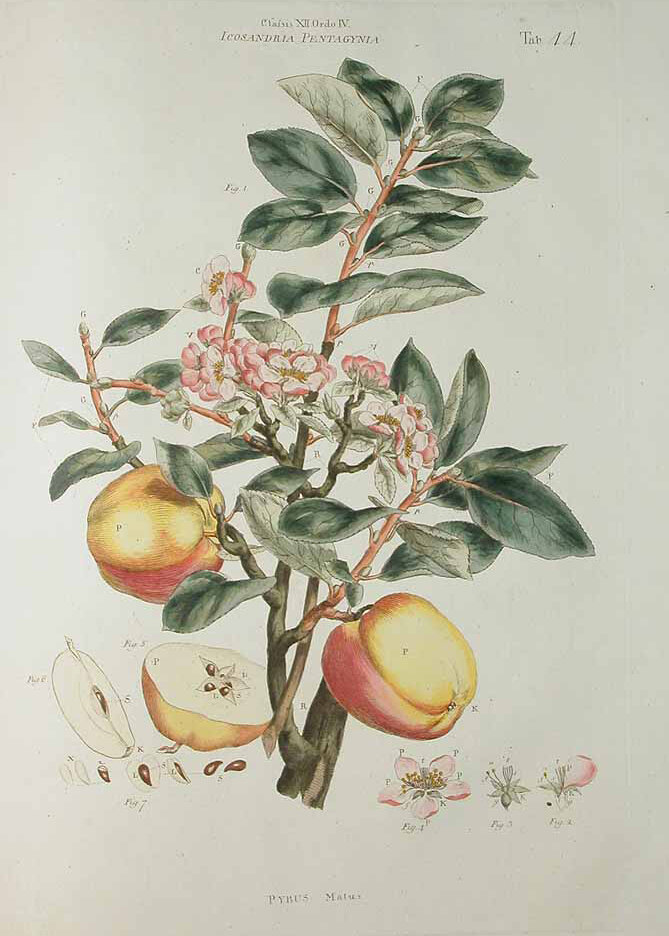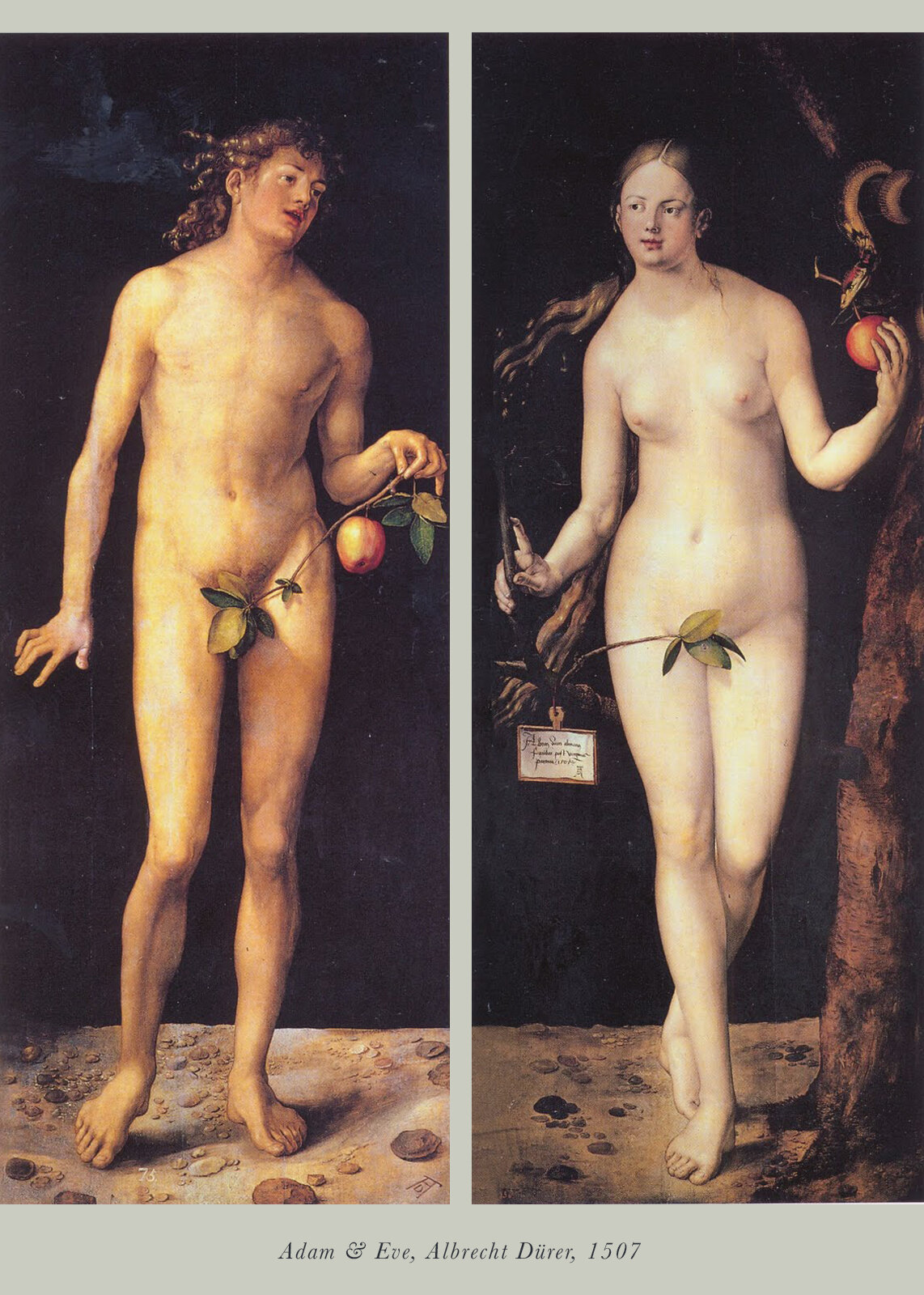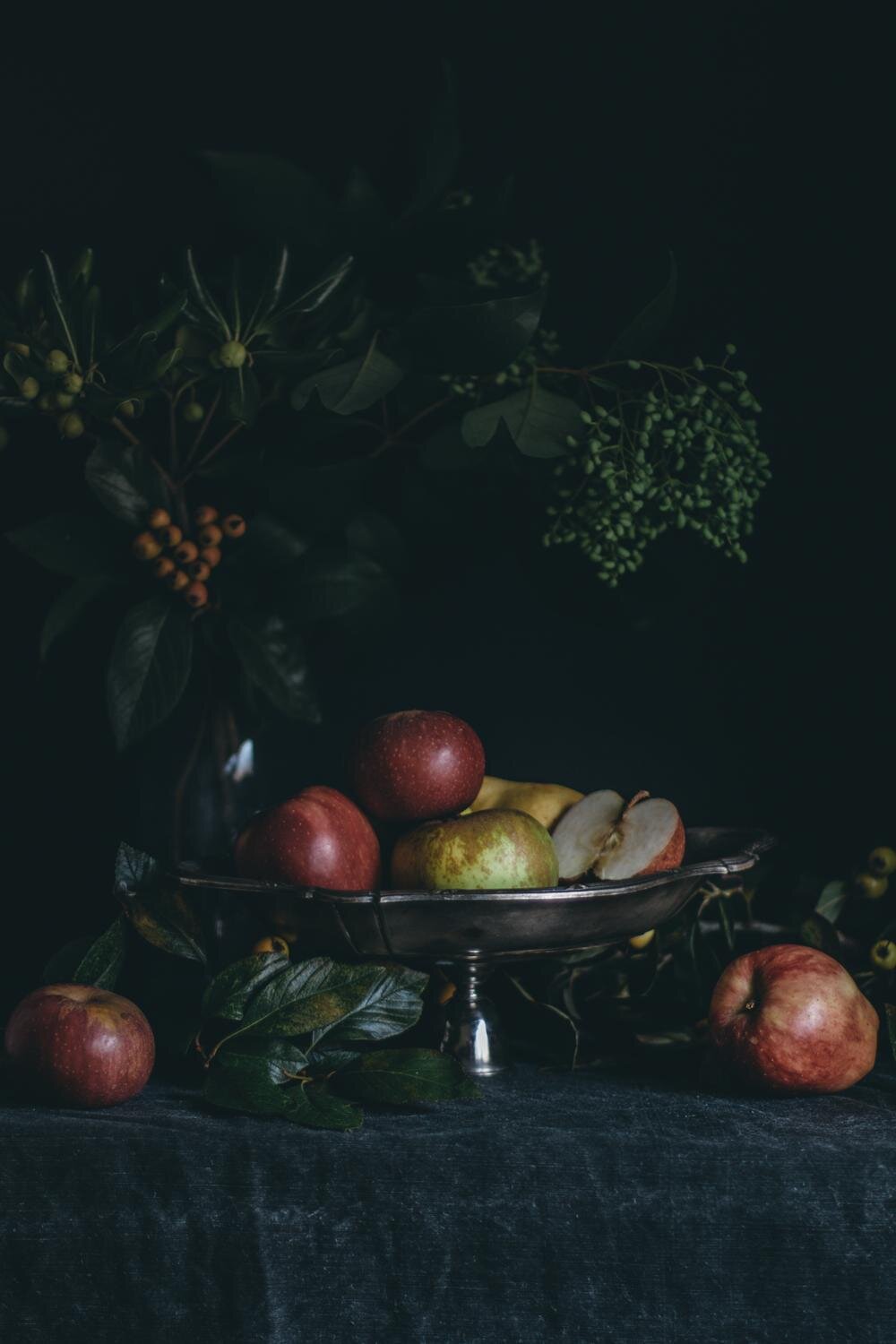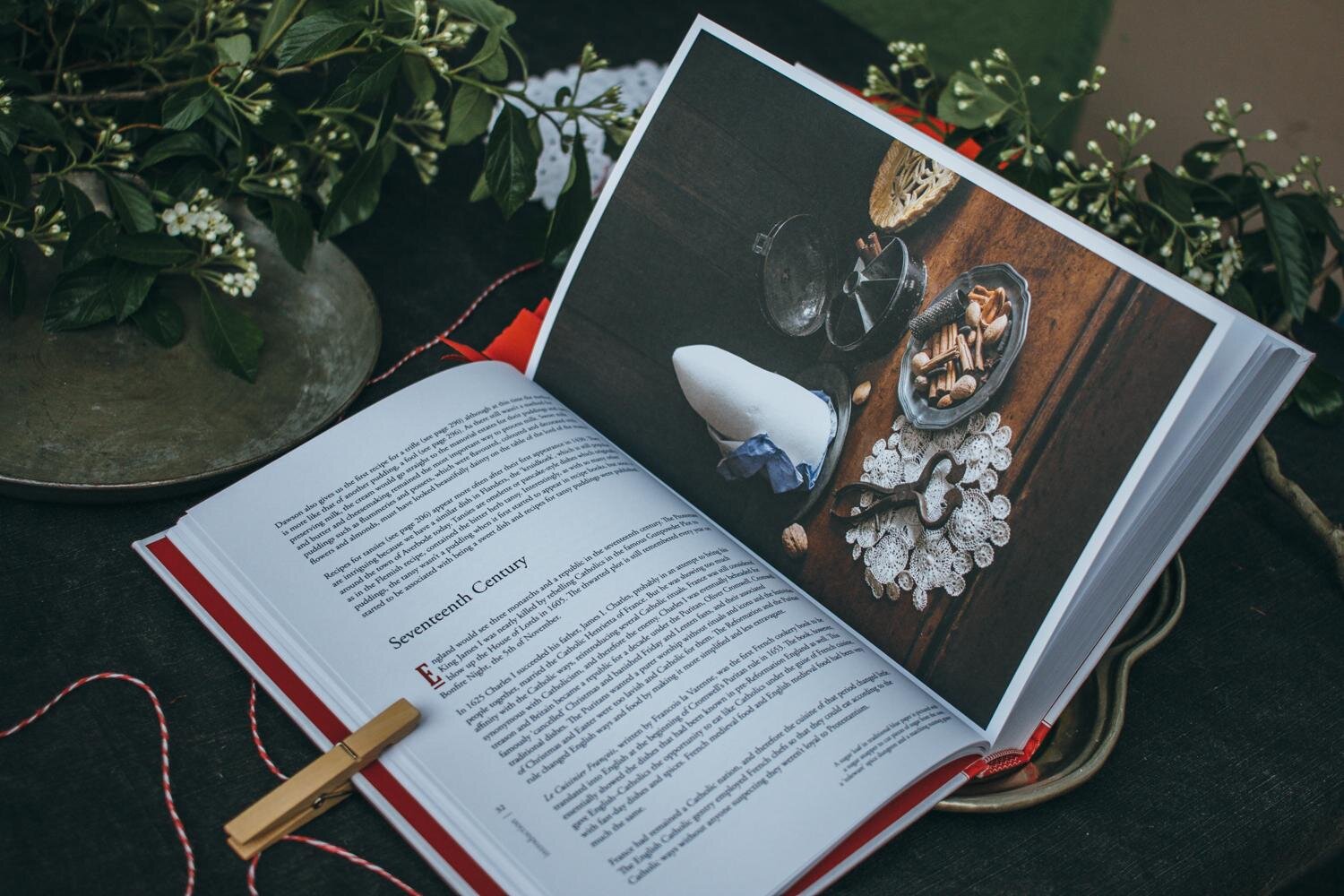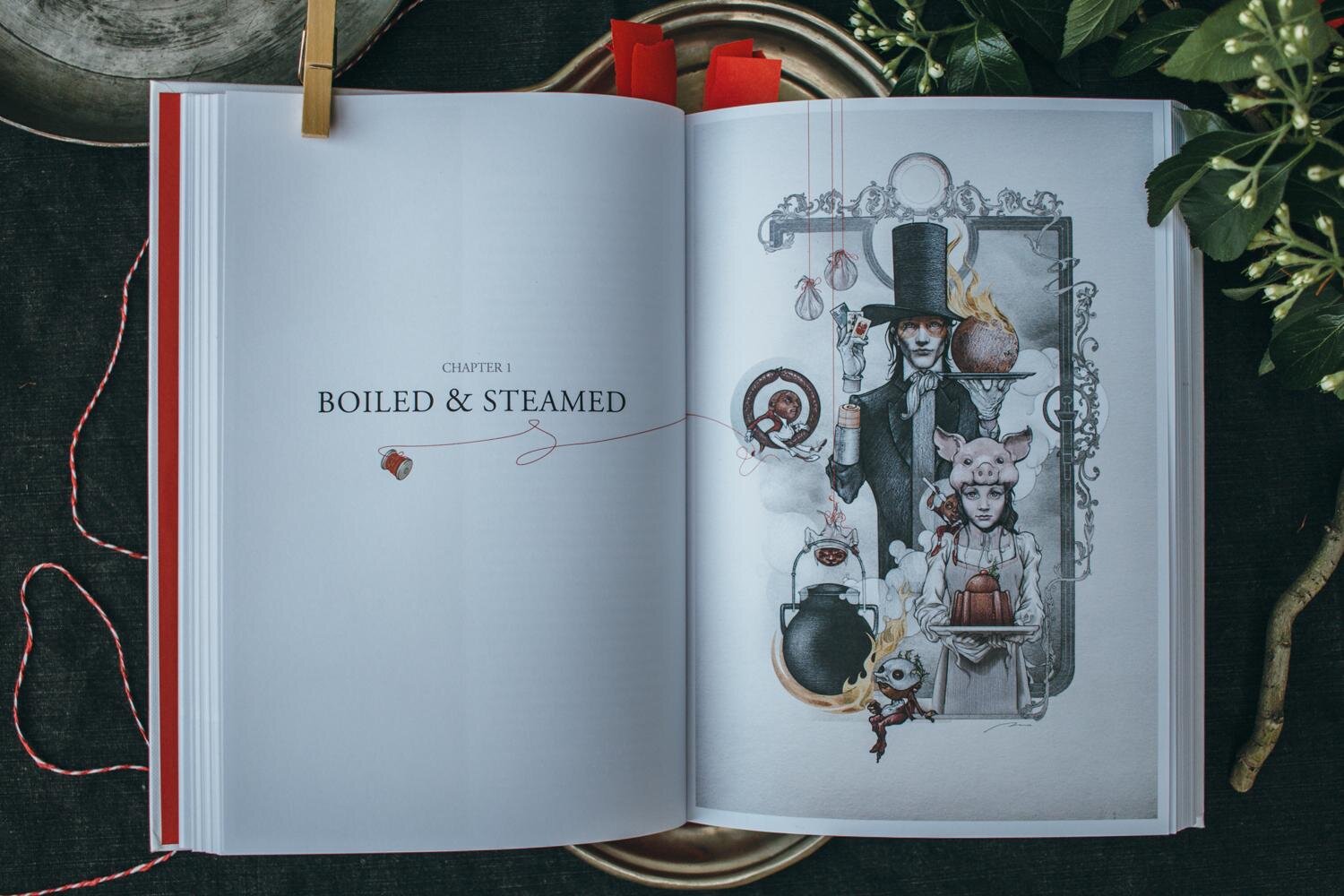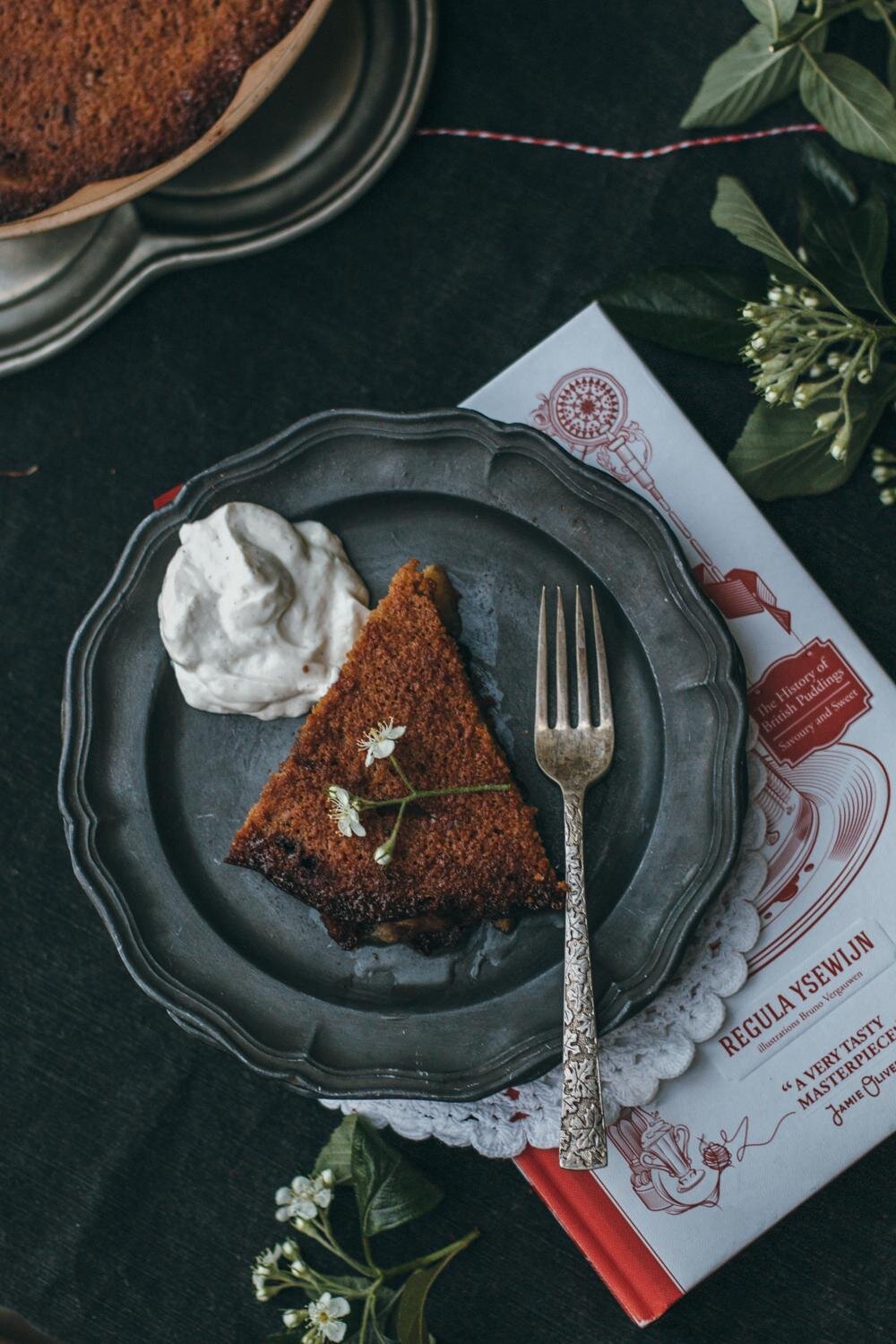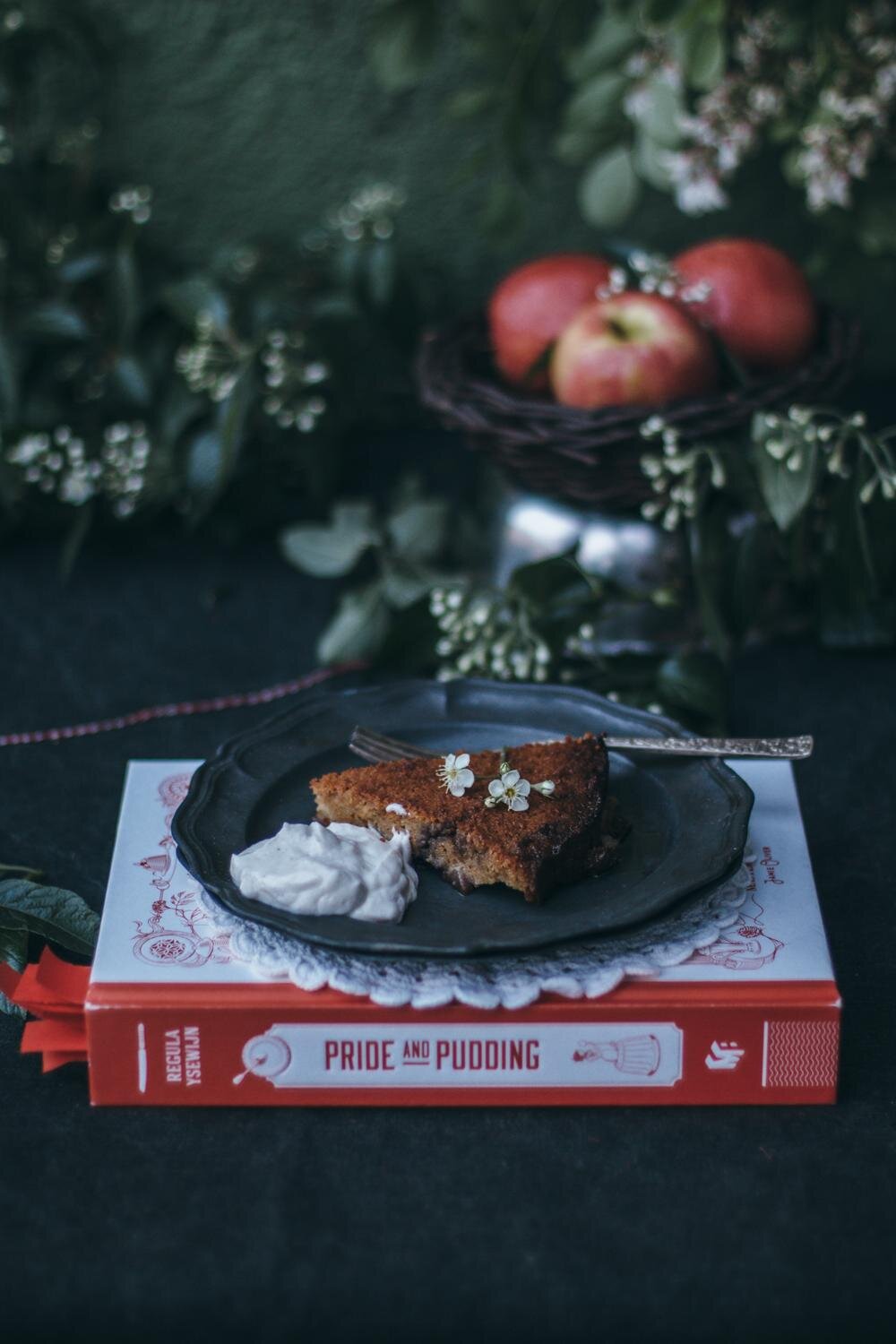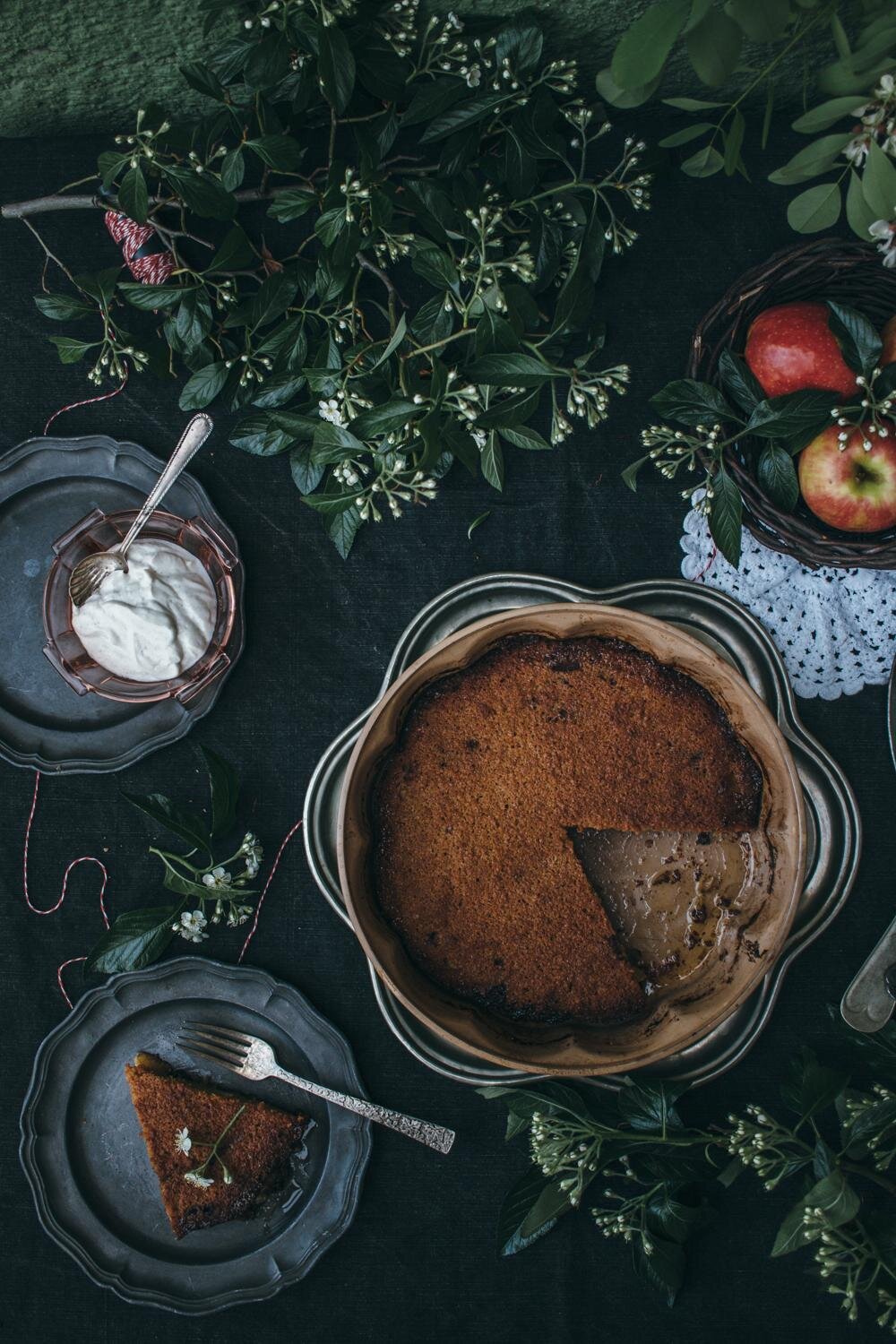The “Art” of Food Blogging; A Review of Pride and Pudding by Regula Ysewijn
The three chapters of this post are interconnected, but if you only want to read my review of the Pride and Pudding cookbook jump directly to Part.III. Enjoy!
I. The Original ‘Sin‘
The more time has passed from school years, the keener I am to appreciate Autumn. You see, I used to absolutely hate the arrival of September, the end of Summer, and the beginning of school.
My school years back in Iran were not easy. Yes, my best friends are still the ones I made during school, and yes, we have plenty of stuff to laugh about at the slightest remembrance of any silly thing that we did back then, but the school I went to was very much of a Pink-Floyd’s-The-Wall sort of school, to make you get the picture.
Our whole educational system —particularly my school— was very focused on scientific subjects such as mathematics, physics and biology. Arts and sports were neglected to the point of disappearance. Everything out of this tight circle was considered a hobby, not much worthy of a teenager’s precious time.
That’s why my range of hobbies was quite wide. I spent half of the afternoons of each week at the English school for many consecutive years, (which was incredibly educational, and much more fun that you could imagine). Apart from that and private music lessons (at which I helplessly sucked), during those years I took various courses of drawing and painting, which later led me to choose Graphic Design as my major at University. It was a rather radical decision for that moment in time, one that my mom still remorses just as much as I’m grateful for it (she still dreams of a doctor or an engineer).
Looking back, I don’t find it surprising at all. After all, the thing I cared most about when filling my notebooks with scientific content was the neatness, the harmony of colors and size of the writing, and the fact that when I flipped through pages, it must have evoke an “Ooooh” sound, as for what a beautifully written notebook.
Good editorial design, beautifully created books and magazines, and harmonious compositions of text and images just sing to my soul. The visual presentation of a text is for me just as important as the content, if not more so. This plays an important role in my choice of cookbooks. Don’t think I’m shallow; a cookbook to me is a source of inspiration, not just in the kitchen, but also in design. That’s why the only cookbooks I purchase new with the intention of keeping them forever, are the ones that are well-designed books, with interesting recipes. Others can be borrowed, bought on kindle or second hand.
II. Apple, the [Un]Forbidden Fruit
Another quick flashback to school days will bring us closer to the core of this piece: my mom’s obsessions with healthy school snack. She was extremely against any junk food, that’s why I was not allowed to take any money to school. She always baked simple cakes at home (such as this one); an afternoon activity that evolved a lot of fun in the kitchen and licking some batter off the bowl. My school snack was a piece of cake and some fruit; almost always an apple.
I had my soft and moist cake during the first break, and the apple on the second one. So that it also worked as a natural toothbrush. Although I knew that my mom’s home-made cake was a precious thing, I couldn’t help craving for chips, or digging my fingers in cheetoz bags that left them all orange and cheesy, or longing for really terrible cold cut sandwiches that somehow tasted like a noble food when wolfed down at the backyard, where other greedily hungry teenagers couldn’t find you.
I have grown up with apples. In Iran we begin the new year with red apples, as they’re part of our famous “7 S’s” table. Later in Spring rosewater apples hit the market; a small and fragrant variety of apples I have had only in Iran. And we knew Summer was ending when the green, crunchy and slightly sour apples appeared on our tables. These are still my favorite type of apples.
Often we neglect the common, ordinary apple as a fruit we can find anytime, anywhere. But apple’s story is tied to human’s story. From the Garden of Edento Snow White, discovery of gravity to modern technology, apples have always been present in mythology, religion and pop culture. Although maybe it’s worth saying that the most (in)famous of these stories that features apple as the forbidden fruit, is a big historical misunderstanding. In fact, the apple is not mentioned at all in the Genesis section of the Bible and neither in Quran*. The only fruit mentioned in that section is the fig, which leaves Adam and Eve use to cover their nakedness. But since in the medieval west the fig was too exotic to be recognized, the common and familiar apple became the forbidden fruit. However, Michelangelo has painted a very clear fig tree on Sistine Chappell’s ceiling.
The apple’s story is so fascinating that drink writer Pete Brown has written a book called The Apple Orchard: The Story of Our Most English Fruit. He has done an outstanding research on this fruit, which was not born in Britain, as is commonly believed. As Brown explains clearly, it has been scientifically proved that the apple grew in Kazakistan for the first time. Not so surprising considering the fact the Almaty means the location of Apples, and Alma-Ata, the other pronunciation of the name of the city means the father of the apple in Turk languages. Alma, (apple) is also a common girl’s name in the whole Silk Road region.
*Biblical and Quranic narratives, Wikipedia.
III. Pride and Pudding, “A Very Tasty Masterpiece” by Miss Foodwise
I am almost sure that Regula Ysewijn aka Miss Foodwise was the first food blogger I came upon and I started following seriously. At that time I was very obsessed with my diet and did not know much about the food blogging world. I had just debuted my presence on Instagram. Beautiful, dark photos inspired by the Dutch masters, intriguing historical recipes from the great Britain, and the stories behind them, tuned into a faithful reader of hers.
One of the things that made Regula’s work very inspiring for me was discovering that she was actually a graphic designer (later turned food and life style photographer), and the fact she applied her background in visual arts and communication to her passion for historical recipes of England.
I watched in pure awe and joy as she shared the preparations of her debut book Pride and Pudding, the History of British Pudding, Savory and Sweet on Instagram. The meticulous research through history, traditions and even the right props for each dish, antique cookbooks for recipe reference, and the extraordinary illustrations of her likewise talented husband, Bruno Vergauwen, made me impatience to get the book as soon as it was released. And I did. It was early in Spring, and I gave it to myself as a birthday present. And to my utter pleasure, the book was even more magnificent that what I had imagined.
There’s a festive air to Pride and Pudding, with the pure red and white pallet on the cover. It’s a satisfactorily heavy book, full of not only beautiful photos and UNBELIEVABLY gorgeous illustrations, but also words. At the end of the day, as the title says, it’s a history of a certain food, therefor there’s tons of reading material.
You might think Pride and Pudding is a book about dessert, because of the word pudding. But thankfully Regula gives us a vast and very informative explanation on how this common belief has come to shape, and how pudding was born as a savory dish and then evolved through history. In fact, I was quite amazed to find out that puddings (and therefor the chapters of this book) are sorted into boiled and steamed puddings, baked puddings, bread puddings, batter puddings, milk puddings and jellies! Basically, as I tried to put it into words for a friend after reading the book, if it’s not a salad, it’s most probably a pudding!
While I might never cook some of the recipes in this book, I’d be sure glad to eat them and I am more than happy to learn about all of them. The book is such a marvel that although I have cooked from it only twice (and I had taken photos of the pages of the recipes), that I am already wearing it out, because I keep reading its passages out of amusement. No wonder Pride and Pudding has been listed among the best cookbooks of 2016 by both The Guardian and BBC’s Food Programme. For me, this book is the perfect combination of food, design and passion, and an example of not just getting things done, but getting them done to perfection.
Are you passionate about any (new) cookbooks this year? Which ones are your favorites? What convinces you to buy a cookbook? Let’s talk about it in the comments.
Eve's Pudding
Yields 18
My love for apples, and the myths and stories about them, plus the adorable name of the recipe made me choose this recipe from the book. It's one of the simplest recipes of Pride and Pudding, in the Baked Pudding chapter. It's inspired by a recipe from the 19th century, and it's basically a sponge cake on a layer of apples. A lovely pudding that gets most of its sweetness from the natural sugars of the apples. Regula suggests using fresh bread crumbs from a good quality bread for an authentic pudding. "Breadcrumbs were used instead of flour when raising agents weren't yet common." This recipe recipe is just as is in the book, in my version in the photos I have substituted currants with blueberries. Regula recommends rhubarbs too.
INGREDIENTS
3 cooking apples, such as bramley or cox
50 g (1 3/4 oz) currants
1 tbsp light brown sugar
200 g (7 oz) butter
2 teaspoons finely grated lemon zest
50 g (1 3/4 sugar) light brown sugar, extra
4 eggs
200 g (7 oz/3 1/3 cups) fresh breadcrumbs*
INSTRUCTIONS
Preheat the oven to 180°C (350°F).
Peel, core and chop the apples into large but elegant chunks. Generously butter the pie dish or cake tin (but don't exaggerate as I did, that's why you see some fat on my tin in the photos). Toss the apples and the currants, and add the light brown sugar.
Prepare the batter by creaming the butter, lemon zest and the extra sugar in a separate bowl, add the eggs one at a time, stirring constantly, and the gradually add the breadcrumbs. When everything is well combined, pour or spoon the batter evenly over the apple.
Bake in the middle of the oven for 50-60 minutes, untile nicely golden brown.
Serve with clotted cream, or custard sauce, or vanilla ice cream.**
NOTES
*If you want to make this pudding with flour, use 200 g (7 oz/ 1 1/3 cups) of plain (all-purpose) flour instead of the breadcrumbs.
**I served this pudding with vanilla greek yoghurt and it was great.
By Regula Ysewijn
